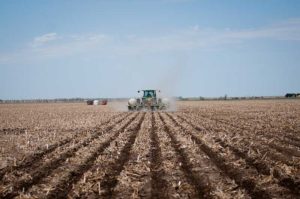Published March 15, 2021 | By Mike Petersen
Well the March 2021 snowstorm did lay down some great moisture here in parts of Colorado and then further east into Nebraska, South Dakota and Kansas was great areas covered with much rain. What all that did beside give me a tired back from snow removal and handling my big snowblower – inside I go to stay for a few days and work on efforts for this website and writing of a forthcoming bokklet on “Root Dynamics and Tillage” [watch for it this fall]. I have written a bit on corn rootworm, compaction, nutrient uptake and moisture… as some of you I hope are paying attention to the idea of companies outside of the world you live in – Agriculture who want to participate in the carbon (C) trading/buying of C credits through government programs or programs initiated by companies like Indio Ag. Do pay attention folks, there is some value in what they may offer to you in the form of fewer tillage passes down to one-pass as what we offer with the Orthman 1tRIPr implement approach.

Strip tilling and minimizing soil disturbance for residues on the soil and old roots and carbon in the soil organic matter complex to not be released into the atmosphere
In my continuing desire to learn, grow and stay current in soil science research I have been diligent to pay attention to the on-going conversations of carbon and carbon trading. How do we do it? How much can be stored in the rootzone? Do annual crops like corn, soybeans, wheat, dry edible beans, oats and many more store enough to offset what man is purporting to be changing the atmospherical CO2 amount? Then we read that CO2 at elevated percentages aids the C3 crops (wheat, soybeans, oats) we grow store carbon and can enhance yields some. With C4 crops (maize, grain sorghum) not as much.
So for this entry of the Precision Tillage blog I am going to offer some data I found interesting in my text references. I have come across a long list of resources and the deep dive into C sequestration on the internet is staggering. Let me tell you all that can be a very deep dive with so many studies and research projects getting published in the last 5 years.
First, researchers Gregory and Barraclough note that for annual crops in the lifespan of those crops (from 90 to 130 days) the early segment of the crop life is when C is stored at some rapid rates. Then after flowering the C storage drops way back. Scientists accomplished the actual percentage by using 13C and 14C to ascertain the amounts stored. In the table below for instance with wheat please observe the amount of C across the growing spectrum.

In this table the scientists observed with wheat that a distribution of the labelled C by percentage of the total measured, ie: 39.6% was found in the roots then later at grain ripening only 10.9%. Evidence that as the plant life matures less and less of the C allocated and produced goes to the roots. Reasoning why this happens due to the sink (kernels of grain in the wheat head) is the dominant transfer of carbon in the plant in the way of carbohydrates. An interesting fact of the soil organic C with wheat later in the crops life is above 41% and root respiration is over 47%.
Where does this kind of information go and what does it mean to me? As you look at what we help you accomplish with a Strip Till System… we are affording you a less than 30% disturbance of the soil surface in a 30 inch row cropping pattern. We are also helping you the farmer be about minimizing the disturbance below the soil surface to break up residue fragments, old roots, root crowns, buried organic materials, left over root exudates from the previous crop to move into the soil organic complex which is food for microbes, worms and other invertebrates of the soil biome. In a full width tillage system the ground is rolled, tumbled and exposed to the surface to release CO2, CO, and then oxidation of fiber-type organics, and organic acids and/or sugars up into the atmosphere. Soil organic matter is the food for the soil microbial engine you rely upon each growing season to also hold water, keep soil aggregates stable, hold onto nutrients and keep soil from eroding away.
This entire subject is growing each day with newly exposed research all to do with carbon being sequestered from trees to ornamentals to rangeland and annual crops. I thought passing along a portion of what is out there would lead some of you to check out closely the Carbon Credit programs and how dollars may be available in your county. Stay tuned.
Researchers Referenced:
Barraclough, P.B., and Leigh, R.A. 1984 Journ. Agric. Science, Camb. 103, 59-74
Gregory, P.J., et al., 1996, Plant Soil 187, 221-228
Swinnen, J., 1994a. Soil Biol. Biochem 26, 171-182